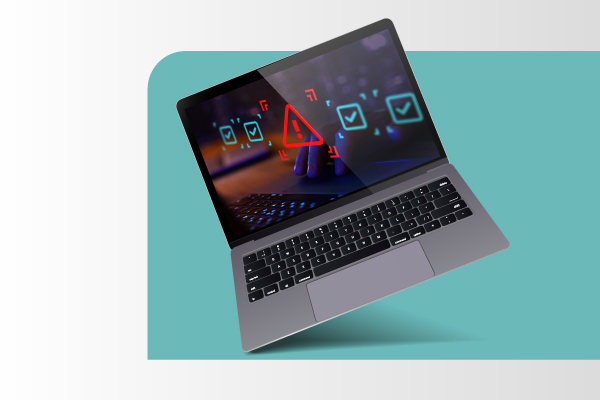As your organization transforms to a multi-cloud environment, cloud infrastructure monitoring helps to manage everything you deploy in the cloud. Hybrid cloud or multi-cloud monitoring tools let you see whether your cloud resources are working optimally and properly interacting with applications and services.
However, cloud infrastructure monitoring is challenging when your legacy monitoring tools have little or no cloud capabilities. Solutions made for traditional environments are all but obsolete when it comes to monitoring cloud infrastructure built on microservices and containers. To implement a highly effective cloud infrastructure monitoring program, you need tools that deliver visibility into your entire IT environment—including servers, network, apps, virtual machines, and business services residing on-premises or in the cloud.
That’s where ScienceLogic’s SL1 can help. Our platform includes cloud infrastructure monitoring tools that help you see and contextualize how critical workloads are performing—no matter where they’re located. With SL1, you can dynamically discover resources across private, public, hybrid, and multi-clouds, and ensure optimal cloud performance with a unified view of your entire IT estate.
Types of cloud infrastructure monitoring
Cloud infrastructure monitoring solutions should provide a single tool and interface for discovering resources, mapping dependencies, and viewing relationships across all your clouds. The right tool should also support every type of cloud monitoring:
- Virtual cloud infrastructure monitoring ensures that virtual resources are allocated properly, and that virtualized IT infrastructure performs optimally.
- Application performance monitoring (APM) for cloud infrastructure delivers full-stack visibility by combining APM data with extensive cloud infrastructure data.
- Database performance monitoring tracks thousands of resources by automatically applying best practice monitoring policies.
- Hybrid cloud infrastructure monitoring tracks performance for on-premises, off-premises, cloud-based, and/or hybrid workloads.
- Unified cloud infrastructure monitoring observes all aspects of IT infrastructure for availability and performance.
- Cloud network monitoring tracks the performance and availability of network components and communication within a cloud environment.
Cloud infrastructure monitoring with ScienceLogic’s SL1
ScienceLogic’s SL1 enables companies to digitally transform themselves by eliminating the difficulty of managing complex, distributed IT services. Our patented technology discovers everything in your IT environment, giving you visibility across all technologies and vendors running anywhere in your hybrid cloud infrastructure.
SL1 enables a unified service view across the entire hybrid cloud universe—data center, public cloud, and private cloud. Combining a wide range of data across environments, SL1 establishes a real-time operational data lake, then analyzes and acts on the data at cloud scale. A rich set of analytical techniques adds context and meaning, cutting through the noise to quickly establish the root cause and impact of any issue. Rich, contextualized intelligence powers multi-directional workflows for both proactive and responsive actions.
With SL1, you get:
- An integrated solution: SL1 integrates easily with other IT management solutions to deliver full visibility and optimization for IT services.
- Complete visibility: SL1 improves visibility by combining configuration, network compliance and backup, performance, and relationship data from your cloud provider’s API along with log file records.
- Enhanced compliance: Real-time cloud infrastructure monitoring means you can set policy-based automations that automatically turn off instances when they are out of compliance with corporate policy or change management processes.
Achieving better business outcomes
ScienceLogic’s SL1 fuses all your hybrid cloud infrastructure monitoring data together in a single platform. By applying analytics and automation, you can achieve significant business outcomes.
- Eliminate visibility gaps: SL1 establishes full-service visibility to ensure an optimal experience for users.
- Consolidate tools: SL1’s comprehensive capabilities streamline your management toolset while filling in monitoring gaps and reducing cost.
- Accelerate onboarding: Onboard new technologies and customers with greater speed and agility by accelerating provisioning workflows, tying tools together, and automating data flows between them.
- Improve CMDB accuracy: Track and synchronize frequently changing hybrid cloud infrastructure data with your CMDB, allowing you to automate more ITSM processes.
- Avoid outages: SL1 automatically maps infrastructure and application relationships and dependencies, enabling you to proactively assess service impact and quickly isolate root cause.
- Reduce MTTR: To diagnose root cause faster, SL1 uses machine learning to correlate both events and anomalies within a service context.
- Automate operational activities: SL1 automates ticketing, routing, troubleshooting, and remediation, enriching tickets with event diagnostic data for faster troubleshooting.
- Enhance performance insights: SL1 automates operational data and promotes a unified management ecosystem by enabling data integration between service desks and CMDB, orchestration platforms, finance system, BI tools, and more.
Why ITOps teams choose ScienceLogic
ScienceLogic is a leader in automated IT operations. The ScienceLogic AI Platform provides ITOps teams with actionable insights that help to predict and resolve problems faster. By empowering intelligent and automated IT operations, ScienceLogic simplifies the task of managing complex, distributed IT services to accelerate digital transformation.
ScienceLogic enables IT teams to consolidate multiple monitoring tools on a single platform. Enterprises and governments around the world rely on ScienceLogic for AIOps, network automation tools, cloud infrastructure monitoring solutions, IT automation, and observability for ITOps, DevOps, DataOps, SecOps, and DevSecOps.
Cloud Infrastructure Monitoring FAQs
What is cloud infrastructure monitoring?
Cloud infrastructure monitoring is the practice of evaluating, monitoring, and managing cloud services, cloud applications, virtual machines, and infrastructure. The objective of cloud infrastructure monitoring is to alert IT teams to performance or availability issues of business-critical applications, to optimize cloud resource allocation, and to monitor the performance of cloud and infrastructure elements associated with applications.
What is cloud infrastructure monitoring vs. cloud network monitoring?
Cloud infrastructure monitoring and cloud network monitoring focus on different aspects of a cloud environment. Cloud infrastructure monitoring tools track the health and availability of various components that comprise a cloud environment—virtual machines, containers, databases, storage, and applications. Cloud network monitoring tools track metrics around network traffic, throughput, latency, packet loss, and the health of network devices and services.








